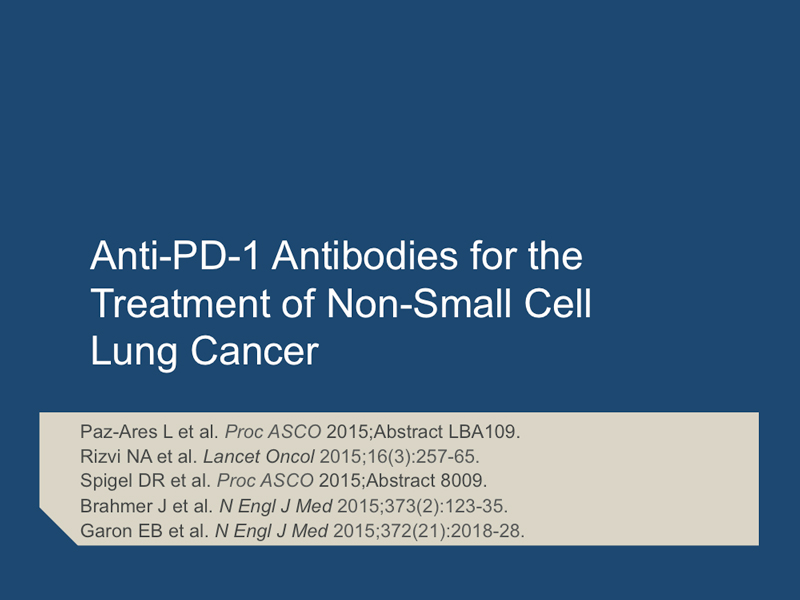iJournal Club - Lung Cancer: 2015Efficacy and safety of the anti-PD-1 antibodies nivolumab and pembrolizumab in advanced NSCLC (Abstract)
Key Points
Editor’s Note
Nivolumab was the first anti-PD-1 antibody approved in lung cancer, specifically in squamous cell cancer (SCC). We were treated to a presentation of detailed data this June at ASCO and a simultaneous publication that now have this agent firmly entrenched as second-line therapy in SCC. At ASCO we also saw a similar data set in patients receiving second-line treatment for nonsquamous cancers, but unlike in SCC, the effect on PFS was not significantly improved, except in a subset of patients with elevated PD-L1 expression. Dr Spigel is uncertain how these findings will be applied to clinical practice, but it could be that if an approval is granted only patients with a prespecified level of PD-L1 expression will receive treatment until further data are available. The other anti-PD-1 antibody in later stages of development in NSCLC is pembrolizumab, which is already approved in melanoma. These results — although similar to those with nivolumab — are from a single-arm study, and clearly approval at this point will depend on the emergence of Phase III data. However, the plethora of available data in both solid and nonsolid tumors have indicated little difference between the available checkpoint inhibitors to date. |

